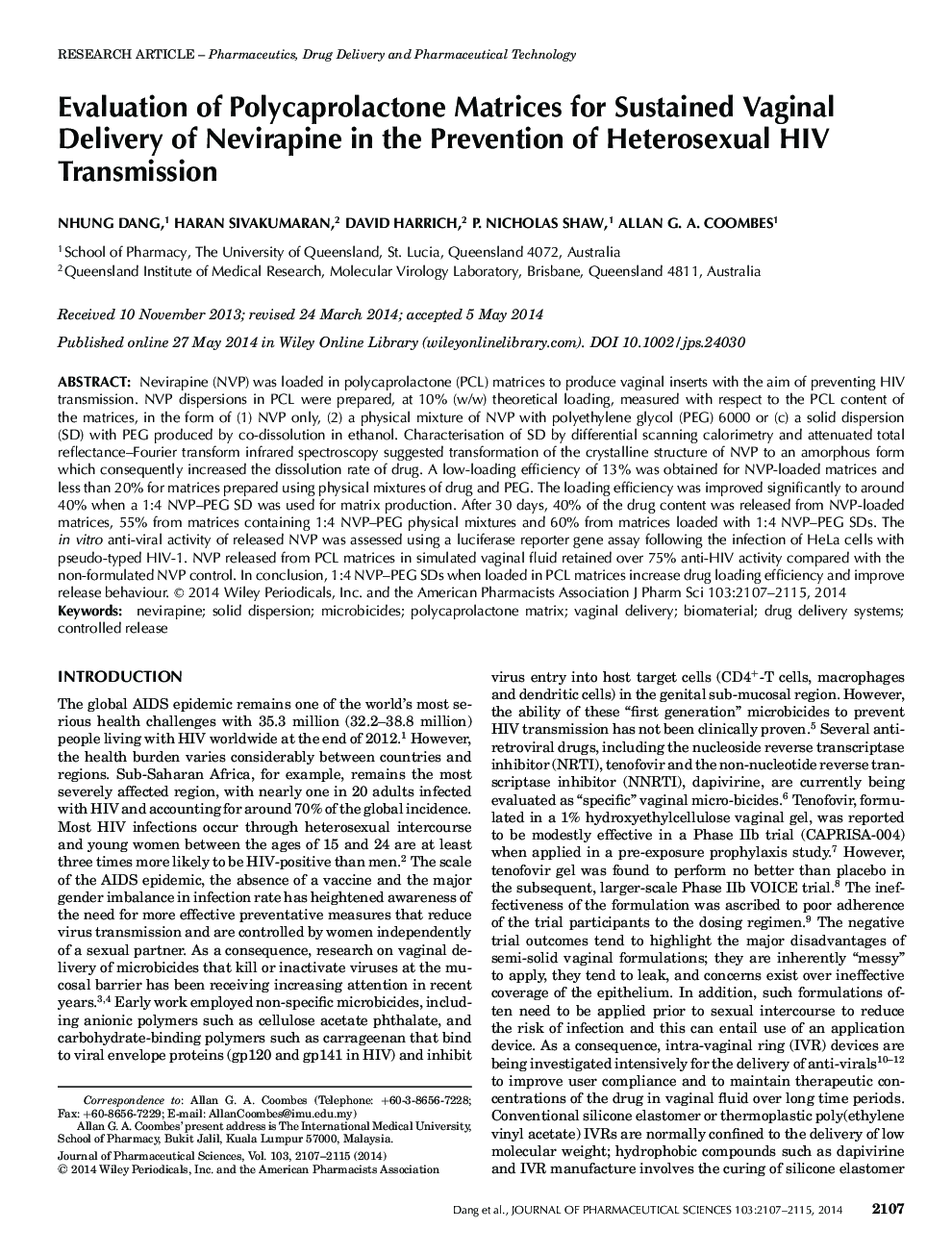| Article ID | Journal | Published Year | Pages | File Type |
|---|---|---|---|---|
| 10162458 | Journal of Pharmaceutical Sciences | 2014 | 9 Pages |
Abstract
Nevirapine (NVP) was loaded in polycaprolactone (PCL) matrices to produce vaginal inserts with the aim of preventing HIV transmission. NVP dispersions in PCL were prepared, at 10% (w/w) theoretical loading, measured with respect to the PCL content of the matrices, in the form of (1) NVP only, (2) a physical mixture of NVP with polyethylene glycol (PEG) 6000 or (c) a solid dispersion (SD) with PEG produced by co-dissolution in ethanol. Characterisation of SD by differential scanning calorimetry and attenuated total reflectance-Fourier transform infrared spectroscopy suggested transformation of the crystalline structure of NVP to an amorphous form which consequently increased the dissolution rate of drug. A low-loading efficiency of 13% was obtained for NVP-loaded matrices and less than 20% for matrices prepared using physical mixtures of drug and PEG. The loading efficiency was improved significantly to around 40% when a 1:4 NVP-PEG SD was used for matrix production. After 30 days, 40% of the drug content was released from NVP-loaded matrices, 55% from matrices containing 1:4 NVP-PEG physical mixtures and 60% from matrices loaded with 1:4 NVP-PEG SDs. The in vitro anti-viral activity of released NVP was assessed using a luciferase reporter gene assay following the infection of HeLa cells with pseudo-typed HIV-1. NVP released from PCL matrices in simulated vaginal fluid retained over 75% anti-HIV activity compared with the non-formulated NVP control. In conclusion, 1:4 NVP-PEG SDs when loaded in PCL matrices increase drug loading efficiency and improve release behaviour.
Keywords
Related Topics
Health Sciences
Pharmacology, Toxicology and Pharmaceutical Science
Drug Discovery
Authors
Nhung Dang, Haran Sivakumaran, David Harrich, P. Nicholas Shaw, Allan G.A. Coombes,
